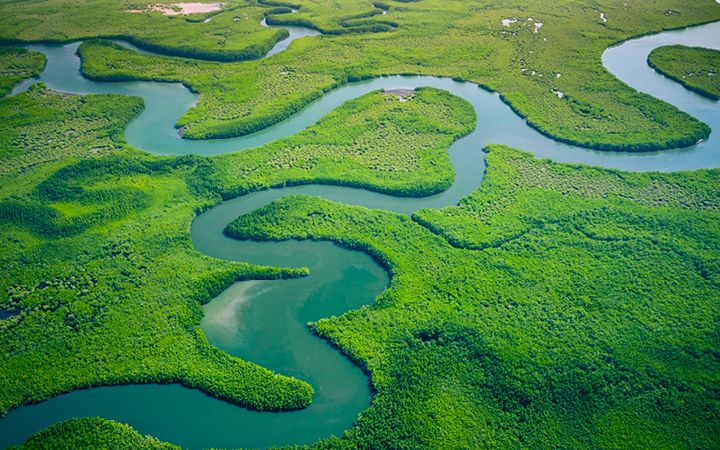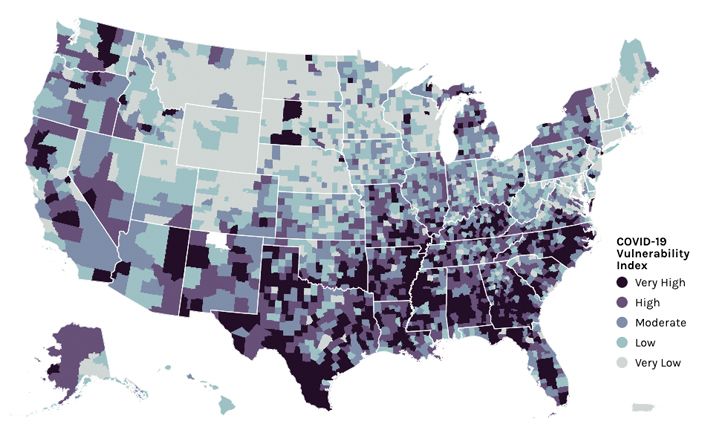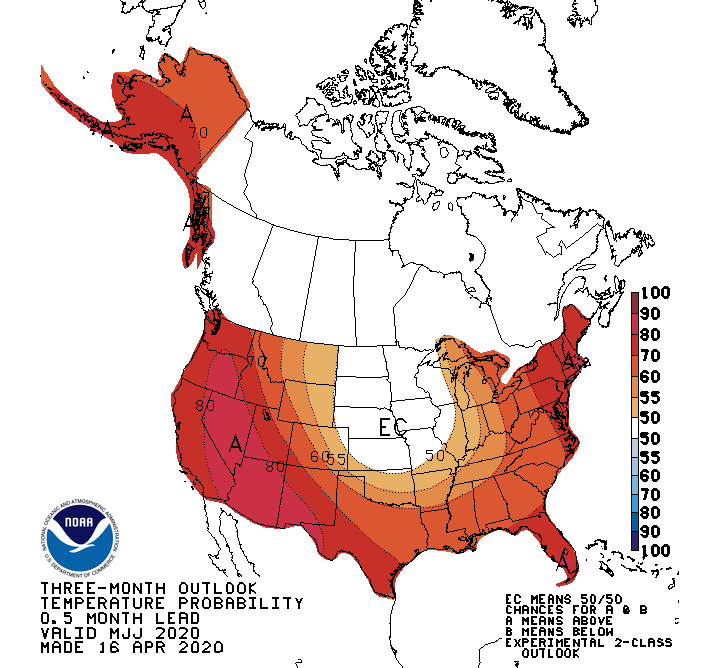
Coping with COVID-19 and heat waves
The National Weather Service predicts above-average temperatures over much of the United States for the early summer, just as we’re hoping to flatten and ride down the back side of the COVID-19 curve. If the predictions turn out to be accurate, it could make life difficult for many of us who are either exposed to heat waves and at risk of contracting COVID-19 or trying to help others who are.
As we try to practice social distancing, what do we say to people during the first big heat wave when they would otherwise group together in a town's cooling shelter? This challenge is particularly acute for people who are most vulnerable to both COVID-19 and heat extremes—such as older adults, who tend to have higher mortality rates from both of these factors. Older adults are sensitive to extreme heat and its side effects, such as lower air quality, which can exacerbate existing conditions like asthma and chronic obstructive pulmonary disease (COPD). Aging can impair the mechanisms that regulate body temperature, and medications frequently used by older adults, including some cardiac medications, can compromise their ability to withstand extreme heat.
Another vulnerable group is people of low socioeconomic status, who not only tend to lack access to good healthcare but also may be unable to afford air conditioning for their homes. Older adults living on fixed incomes may fall into this category, but so do many disadvantaged groups and individuals. The Surgo Foundation recently produced a map showing places in the United States where vulnerability to COVID-19 is highest.

This figure from the Surgo Foundation shows counties where vulnerability to COVID-19 is likely to be highest. It is based on factors including socioeconomic status, household composition, disability, minority status, housing type, transportation, epidemiological factors, and healthcare system factors.
A third category of people who may be placed under additional stress—on top of the large burden they already carry as front-line workers—are healthcare providers and emergency responders. Just as our emergency care system is trying to dig out from the COVID-19 pandemic, it could be maxed out again—particularly in places where literal (i.e., temperature) and figurative (i.e., COVID-19) hotspots flare up this summer.

This figure shows the National Weather Service’s temperature probability forecast for May through July 2020. The shading indicates the probability of above-average temperatures. It is noteworthy that many of the same places that are forecasted to have a higher probability of above-average temperatures are also places where COVID-19 vulnerability is the greatest, although the actual risks of exposure among vulnerable populations to both extreme heat and COVID-19 are influenced by a complex interplay of socioeconomic and physiological factors.
Hoping for the best while preparing for the worst
Maybe we'll be so fortunate that COVID-19 will be beat back by mid-summer, there won’t be any resurgences, and bad heat waves won’t occur until well after we’ve emerged from the pandemic. It’s also possible that higher temperatures will actually accelerate the retraction of the outbreak, as some studies suggest. But we can’t count on it, at least not according to an analysis by the National Academies of Science, Engineering, and Medicine, which pointed out that “the other coronaviruses causing potentially serious human illness, including both SARS-CoV and MERS-CoV, have not demonstrated any evidence of seasonality following their emergence.” Another reason for pessimism is the recent acceleration of new cases in the Gulf States, where summer weather has already begun.
The good news is that we have a few weeks remaining to think through the implications of this potential double whammy of COVID-19 and heat waves, and plan how communities, healthcare providers, and emergency responders can effectively prepare and respond. We can't afford to wait for a technological fix. It's going to come down to practical, science-based public health and emergency preparedness and response approaches.
The CDC weighs in
The Centers for Disease Control and Prevention (CDC) has gotten a head start on this by providing interim guidance that includes recommendations such as setting up a greater number of smaller cooler centers, using physical barriers and other strategies to maintain distancing within a cooling shelter, ensuring proper air filtration systems are in place, following established guidelines on hygiene, and offering personal protection equipment to visitors and staff. Given all of the uncertainty surrounding COVID-19, the CDC emphasizes that this guidance is based on what is currently known—and that could change as scientists improve their understanding of how the coronavirus can be transmitted. That understanding is likely to advance based upon data in massive archives such as CDC’s National Syndromic Surveillance Platform, which collects the data from hospitals and emergency departments around the country, allowing scientists to figure out the evolving fingerprints of the disease.
A path forward
Defeating the COVID-19 pandemic is a global priority, and while much is still unknown about the virus, we are learning more every day. As we head into the hot summer months, it’s important to remember that we already have the two most powerful weapons in our possession: science and ingenuity. Now is the time to use them wisely—to responsibly protect the most vulnerable among us from extreme heat without exacerbating their risk of exposure to a potentially fatal virus.
